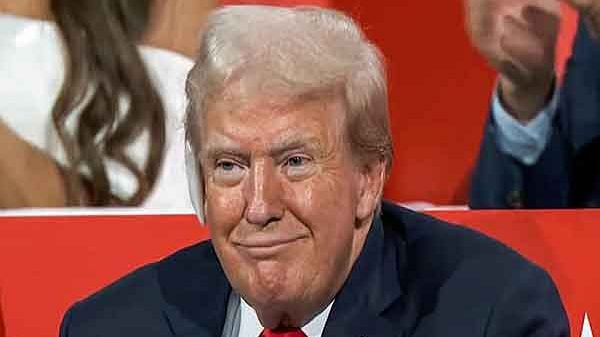Just days after the ‘pause’, Trump’s favourite European leader, Giorgia Meloni, flew across the Atlantic to meet him. She is Europe’s best bet to soothe the transatlantic rupture—and to her credit, she did.
Simultaneously, Trump’s Secretary of State Marco Rubio and special envoy Steve Witkoff flew to Paris for discussions with Europeans and Ukrainians on the future of the war in Ukraine.
Gone are the early rants of strategic machismo, where the ‘big daddies’—the US and Russia—would seal Ukraine’s fate, bypassing the rest. Trump has had to eat humble pie, though his rhetoric hides it well. Many players in the game now see through his grand incompetence.
Also read: Forget Biden-era alliances—Trump wants Indo-Pacific partners to pay up or fall in line
Meloni’s charm offensive
Dressed in a crisp white suit, Meloni struck all the right notes at the Oval Office, seated beside a grumpily narcissistic Trump. Contrary to what her critics suggested, she did not go to negotiate a separate tariff deal for Italy.
For the record, Rome has been one of the worst affected by Trump’s tariff onslaught. But the EU negotiates trade policy as a bloc—individual countries cannot alter this.
In her four-minute address, Meloni unleashed her charm offensive on Trump—delivering a mix of what he wanted to hear (anti-immigration remarks, promises of more Italian investments in the US) and what he didn’t (a call to make the West, not just America, great again—implying a revival of Transatlanticism). She also delivered remarkable clarity on the need to defend Ukraine for a just and lasting peace. Whatever followed in the Q&A was inconsequential. She had done her job well.
Meloni was sent as a European voice—a right-wing leader Trump admires, who shares many of his political values. Yet she remains a Ukraine supporter and one of the fiercest Putin critics in Europe. She didn’t go there to “fetch” results but to do what only she could.
The result? Some good-faith statements, a jocular lunch with a freshly catholic JD Vance in Rome the next day, and applause from the bloc.
Also read: Sweden’s Indo-Pacific strategy has an India-sized gap. Piggybacking US allies won’t work
Eating humble pie
Back in Europe, Rubio and Witkoff’s discussions with top European and Ukrainian officials were spearheaded by Emmanuel Macron at the Élysée Palace. This meeting added a layer of much-needed realism to America’s approach to the Ukraine war.
Despite Rubio threatening to walk out if there was no progress, this was the first substantive high-level meeting with French and German officials, alongside Ukraine’s Presidential Advisor Andrii Yermak, Foreign Minister Andrii Sybiha, and Defence Minister Rustem Umerov. British Foreign Secretary David Lammy also joined the talks, reinforcing pan-Europeanism.
This dash of realism came after US engagement with the Russians—via meetings facilitated by Saudi Arabia—led to ceasefires that were broken within hours. Understandably, After the Paris talks, anonymous French officials hinted that the US is now ready to discuss “security guarantees” for Ukraine, though without elaboration.
A stable ceasefire remains logically implausible—on one side, Russia’s maximalist demands and sluggish battlefield performance; on the other, Ukraine’s determination to fight and Europe’s (Hungary and Slovakia aside) unrelenting posture.
So far, the American strategy has been to put maximum pressure on Ukraine and minimum demands on Russia. But Rubio’s latest statements, despite sounding threatening to Kyiv, seem equally directed at Moscow: “Take the offer now, while we still have the leverage.”
Then there is the minerals deal—many thought it withered away with Zelenskyy’s Oval Office showdown in February. Amid the noise of the senseless tariff war, the deal’s developments have been forgotten.
Also read: India’s diplomacy in the Indo-Pacific has an economic hole. Fill it with trade, investment
Is there light on the horizon? Hardly
MAGA’s strategic cacophony continues. Trump continues to make delusional claims about fixing the American economy and everything else that Joe Biden ruined. His top officials, Vance and Rubio, give contradictory statements on the Ukraine War. Yet, a pattern is emerging.
Four distinct features stand out:
First, the Trump administration has disastrously conflated rhetoric for strategy. They do not have any plan. That quite explains why MAGA has been free-falling into its own simulation, becoming a laughing stock in a world first seized by shock and then entertained by unending idiosyncrasies. As Trump fans wait for him to pull a rabbit out of the hat, they get delusional statements, starkly untrue and disingenuous amid worsening economic indicators.
Second, the administration has shown typical bully syndrome—it bends quickly when the other side pushes back. Think Canada, Mexico, the EU—even China.
Third, the administration cannot ignore falling market performance and approval ratings—the most plausible explanation for the 90-day pause.
And fourth, this administration has an extremely short attention span without any consistency whatsoever. Obsessed with delivering quick deals, it is willing to abandon and move on to the next big newsmaker rather than following through.
Europe seems to have grasped these four tendencies. That understanding will go a long way in determining the texture of EU-US trade negotiations and the course of the war in Ukraine.
If defence is where Europe is struggling to perform, trade and tariffs are where the bloc has experience, expertise and tools to act swiftly. The EU should be able to negotiate a better trade arrangement with the US during this 90-day interregnum.
Ukraine, too, has understood that the minerals deal is the best bet to keep America equidistant between Kyiv and Moscow. Ukraine’s Economy Minister Yulia Svyrydenko has signed an interim agreement with US Treasury Scott Bessent, likely to be formalised into a full deal on 26 April.
As the Trump administration nears its 100th day, it reels under the weight of its own incompetence—tone deaf and intemperate in its under-delivery.
It shows how wrong Trump has been in oversimplifying the world he inherited in 2025, the complex wars he vowed to end, and the economy he promised to fix.
History teaches us that resilient leaders listen first and strategise later. Even if Trump won’t, others affected by America’s unmatched geopolitical and geoeconomic power must.
New Delhi’s studied silence on all things Trump shows how India’s multi-alignment has long ceased to be evenly distributed. It now exists mostly for internal political messaging. India has risk-aversely distanced itself from being the ‘international telephone operator’ in the Russia- Ukraine war. It seems single-mindedly focussed on preserving its crucial economic and security relationship with the US—even accepting all demands, including a trade deal by fall.
Pragmatically, though, New Delhi is also pushing for meatier ties with more stable actors—pursuing an early harvest FTA with the EU and a full FTA with the UK.
These long-standing negotiations have borne the brunt of India’s lack of internal
|reforms—under Trump, that’s no longer a bargaining chip. Reading the geopolitical moment, acting accordingly, and allowing Trumpian chaos to wear itself out—that’s the optimal strategy.
So: stay put, and act in time.
Swasti Rao is a consulting editor at ThePrint and a foreign policy expert. She tweets @swasrao. Views are personal.
(Edited by Prashant)
var ytflag = 0;
var myListener = function() {
document.removeEventListener(‘mousemove’, myListener, false);
lazyloadmyframes();
};
document.addEventListener(‘mousemove’, myListener, false);
window.addEventListener(‘scroll’, function() {
if (ytflag == 0) {
lazyloadmyframes();
ytflag = 1;
}
});
function lazyloadmyframes() {
var ytv = document.getElementsByClassName(“klazyiframe”);
for (var i = 0; i < ytv.length; i++) {
ytv[i].src = ytv[i].getAttribute('data-src');
}
}








